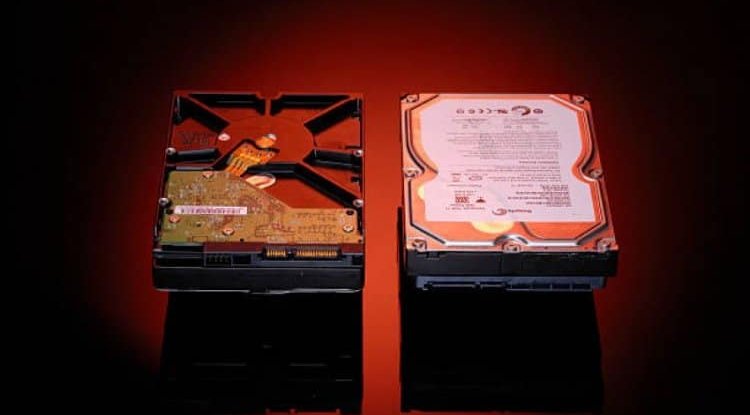Six things that should never be used on laptops again
The Osborne 1 was the first hugely successful "portable" computer, debuting in 1981 with a 4 MHz Z80 CPU, 64 KB of RAM, and a hefty 25 pounds. Its integrated screen was small and carrying it was difficult.

Today, 41 years later, we can discover laptops like the ASUS ExpertBook B9, which boasts a 14-inch full-color screen, an Intel Core i7-1255U processor with two P cores at 3,500 MHz-4,700 MHz and eight E cores, supports up to 32 GB of RAM, and weighs 880 grams in its base configuration. This equipment is extremely powerful and lightweight, allowing us to move it with just one hand.
We come from a time when downsizing, mobility, and autonomy did not mesh well with the concept of a laptop, but we have gradually transformed them into core values found in the majority of laptops today.
During those 41 years of evolution, we also encountered several innovations that, for better or worse, were incorporated with varying degrees of success in this sort of computer. Not all of them were pivotal or left their imprint on history, but many of those who did were eliminated and would not have a place on any contemporary team.
In this article, we'd want to share with you six of those things that were formerly important in laptops but were eventually abandoned and, for one reason or another, should never be employed in a laptop again.
Two dedicated GPUs
Let's face it: the days of SLI and CrossFire are long gone and for a variety of reasons. Combining multiple GPUs makes sense in the professional sector, but not in the general consumer market because:
- Performance scaling was not good at all.
- The lack of optimization and support was so clear that many games didn't even use two GPUs, they just ran on one.
- The increase in consumption and heat generated were very high.
- Games prioritize the use of a GPU.
With this in mind, it is reasonable that the usage of two or more GPUs in the PC market will eventually be abandoned, and it makes even more sense in the portable sector. Installing two dedicated graphics processors in a laptop proved to be a big source of issues because:
- The cost was enormous to the consumer and not worth it in terms of performance.
- It required significant sacrifices in terms of design, size, and mobility. Laptops were bigger and heavier and had to mount bulkier, noisier, and more expensive cooling systems.
- They generated a lot of heat, which could end up causing problems in the medium and long term.
- They greatly reduced the autonomy of the team.
Low resolution and low-quality screens
Low-quality screens have been prevalent in the portable sector for a long time, and while they have fallen out of favor, they have not been completely phased out. This has an explanation, and it is found in the importance that laptops under 300 dollars still have, but it is something that we must overcome as soon as possible, and frankly, We do not see any need to continue mounting 15-inch displays with resolutions of 720p or 768p.
Proprietary chargers
Proprietary chargers are ones that can only be used with a specific device, and they have long been a source of contention in the portable sector. Fortunately, we have seen a definite tendency to standardize charges over time, which means that we can use the same charger to recharge the battery of different devices and that if we lose it or it breaks, we can buy a generic one or use the charger of another laptop.
Finally, it is apparent that proprietary chargers are neither good for the user nor the environment, because their useful life is usually shorter, and when we stop using the laptop to which they are connected, they directly become a piece of electronic rubbish. In this regard, the USB Type-C port has played a critical role, so much so that we can already use smartphone chargers to recharge the batteries of ultra-light equipment, but there is still a long way to go.
Unfortunately, a major fraction of gaming laptops, particularly the heavier and bulkier ones that utilise fast-charging technologies, still use proprietary chargers, making this a pending issue. Overall, it is evident that standardization around a single port to charge gadgets, including laptops, will be accomplished in the end, which is excellent for all of us.
Hard drives as the main storage
Hard drives are a major impediment to the portable business for a variety of reasons. The first is its size; even 2.5-inch models take up important internal space that could be used to combine additional components and lower the overall size of the equipment.
The second reason is that they have mechanical parts, which makes them noisier and more susceptible to shocks, jolts, and vibrations.
Hard drives, on the other hand, are slower and can significantly damage computer performance if minimal maintenance is not performed on a regular basis, owing to the classic problem of fragmentation.
We know some may argue that they have the advantage of providing more space at a lesser price, but this does not compensate for all of the above when it comes to laptops.
When considering how it affects the sale price, keep in mind that the rise of eMMC memory and low-cost SSD drives has ringed HDDs in the portable sector to the point that they no longer make sense. Even in low-cost equipment, eMMC solutions or SATA III SSDs provide a far better value. If we require extra room, we can add another storage unit or use an external drive.
Optical drive readers
As with hard disks, mounting an optical drive in a laptop requires the utilization of valuable space. This makes the equipment that incorporates this sort of unit bigger and heavier, and it also has an impact on the internal structure of the equipment, component distribution, and the cooling system.
If you need this type of drive because you still use CDs and DVDs on a regular basis, it is best to use an external reader, which is quite inexpensive and works flawlessly.
Designs and extreme configurations
We could provide numerous examples, but one of the most well-known was the ASUS ROG GX800, a 5.3-kilogram laptop that could be attached to a 4.7-kilogram external cooling system. Do the math: this "dynamic duo" gained a total of 10 kg.
Fortunately, these designs and configurations have nearly entirely disappeared. Nowadays, it is rare to find a laptop that weighs more than 3 kilograms, even when equipped with high-performance components, and AMD, NVIDIA, and Intel have chosen specialization, that is, the development of high-performance components as well as high efficiency, adapted to the specificities of laptops.
As a result, graphics cards as powerful as the GeForce RTX 3080 Ti Mobile may now be found in laptops weighing less than three kilograms and customized with numerous TGP profiles.
Not to mention the Ryzen 6000 Mobile series APUs, which include 8-core and 16-thread CPUs and integrated GPUs that are both powerful and efficient. The Core i9-12900HX, Intel's first 16-core (8 high-performance and 8 high-efficiency) 24-core processor for laptops, also represented a significant turning point in this area.
Post by Bryan C.





































